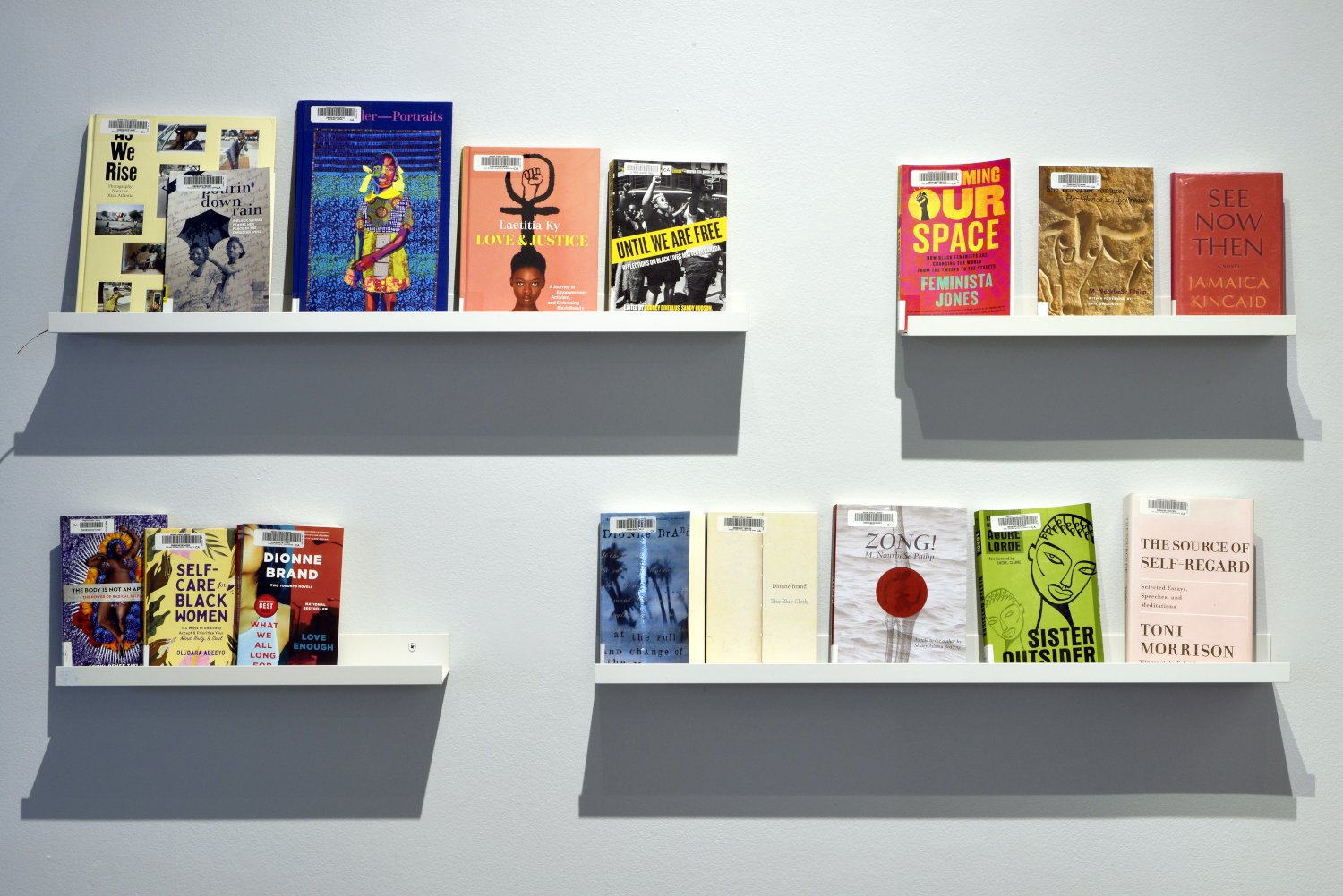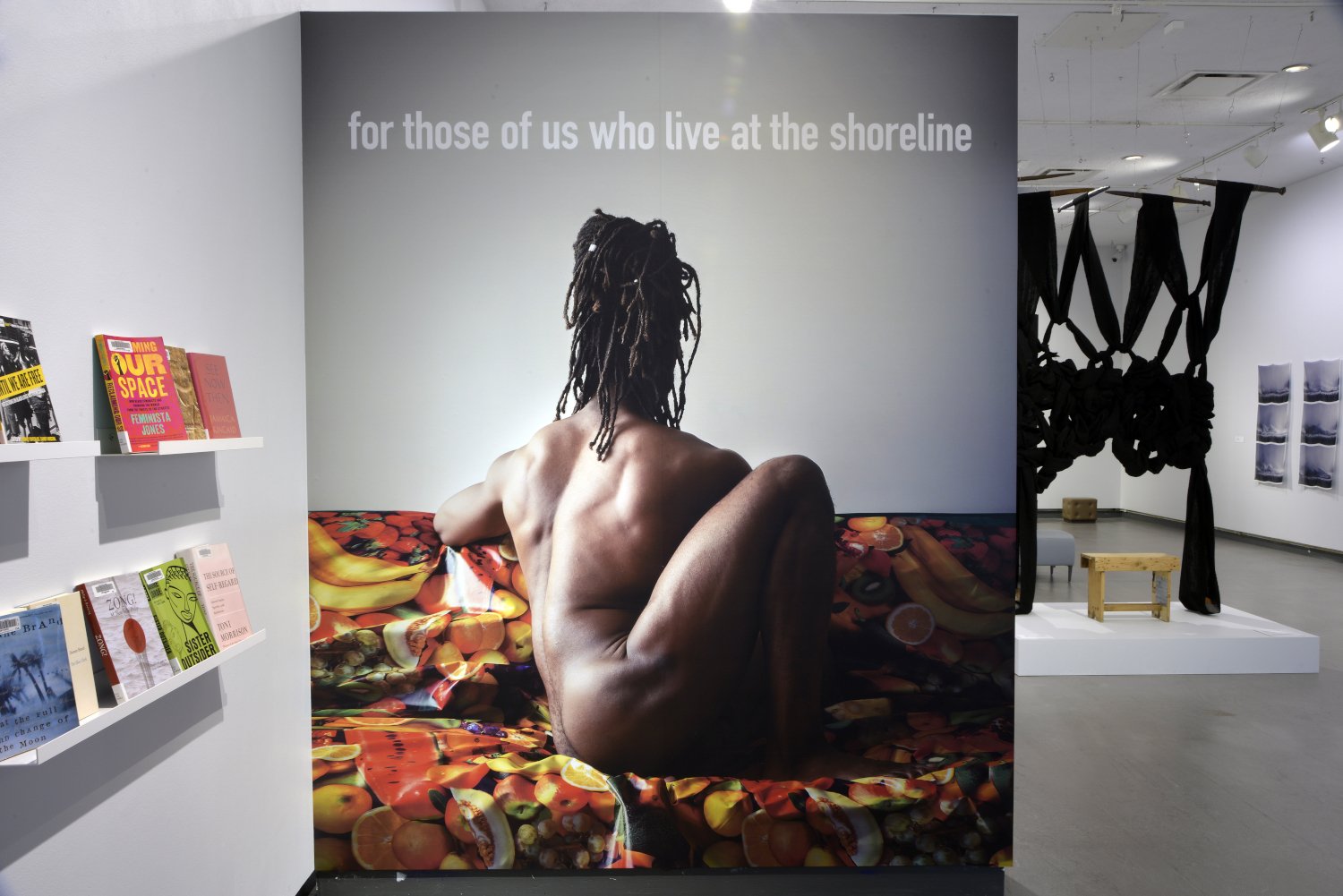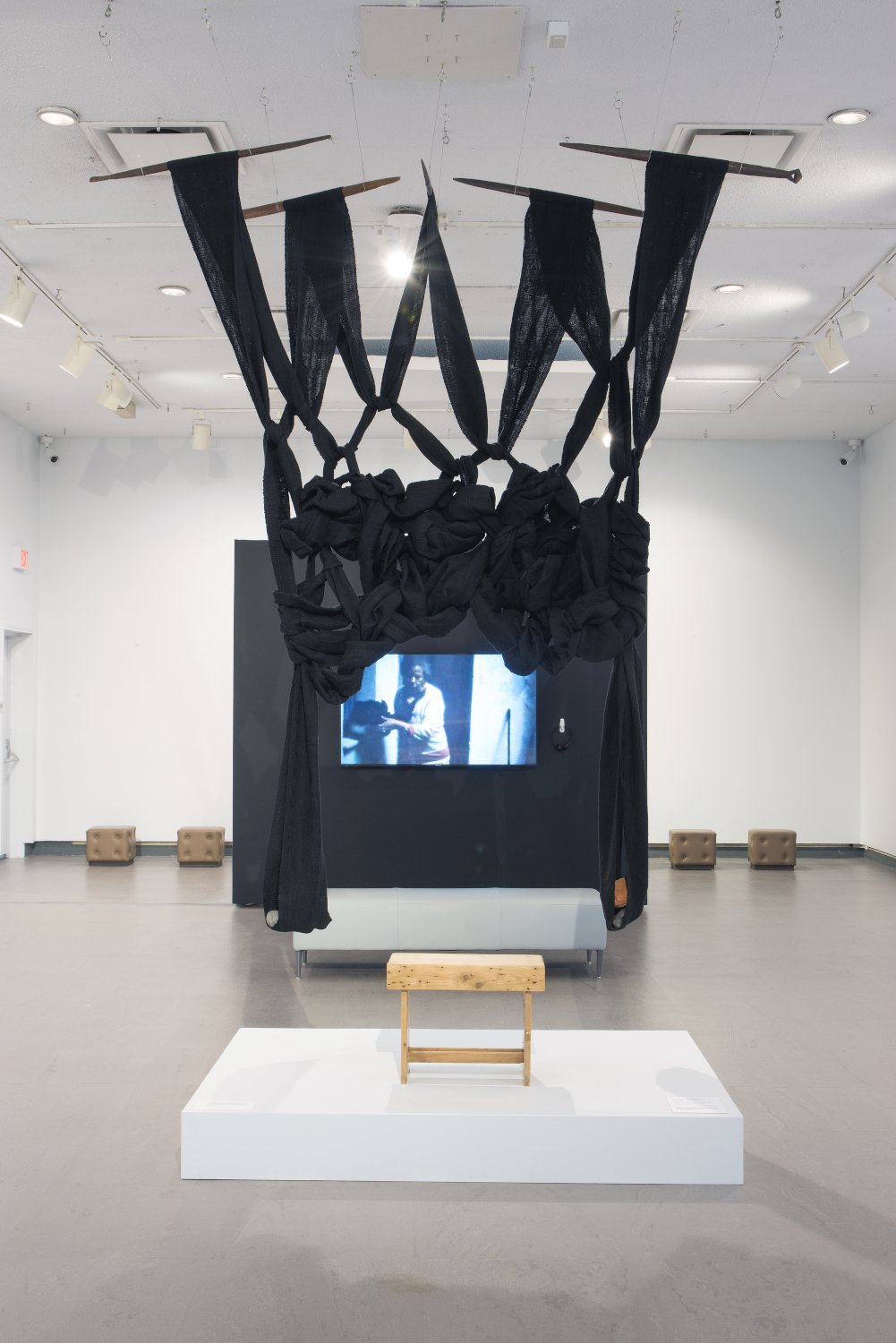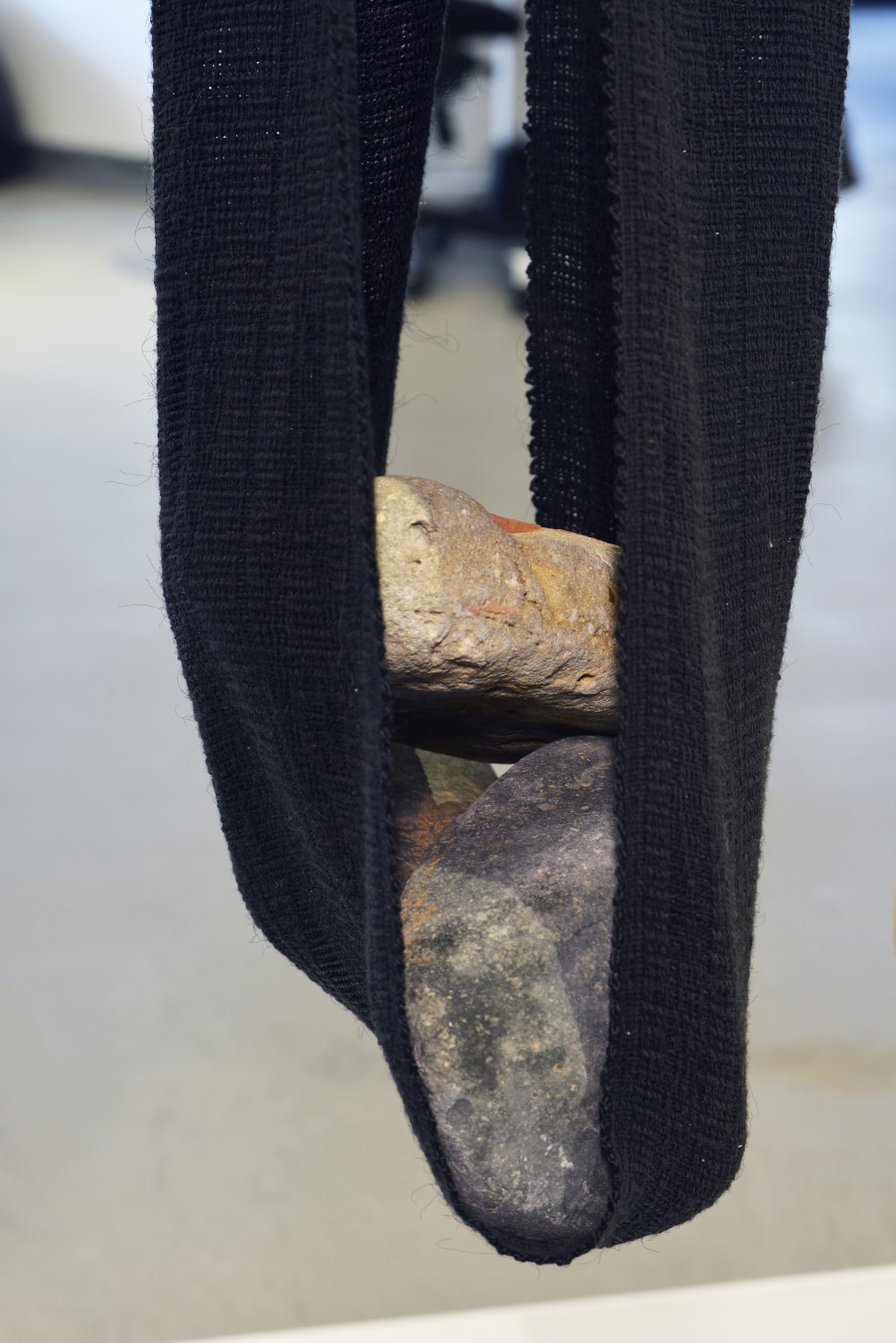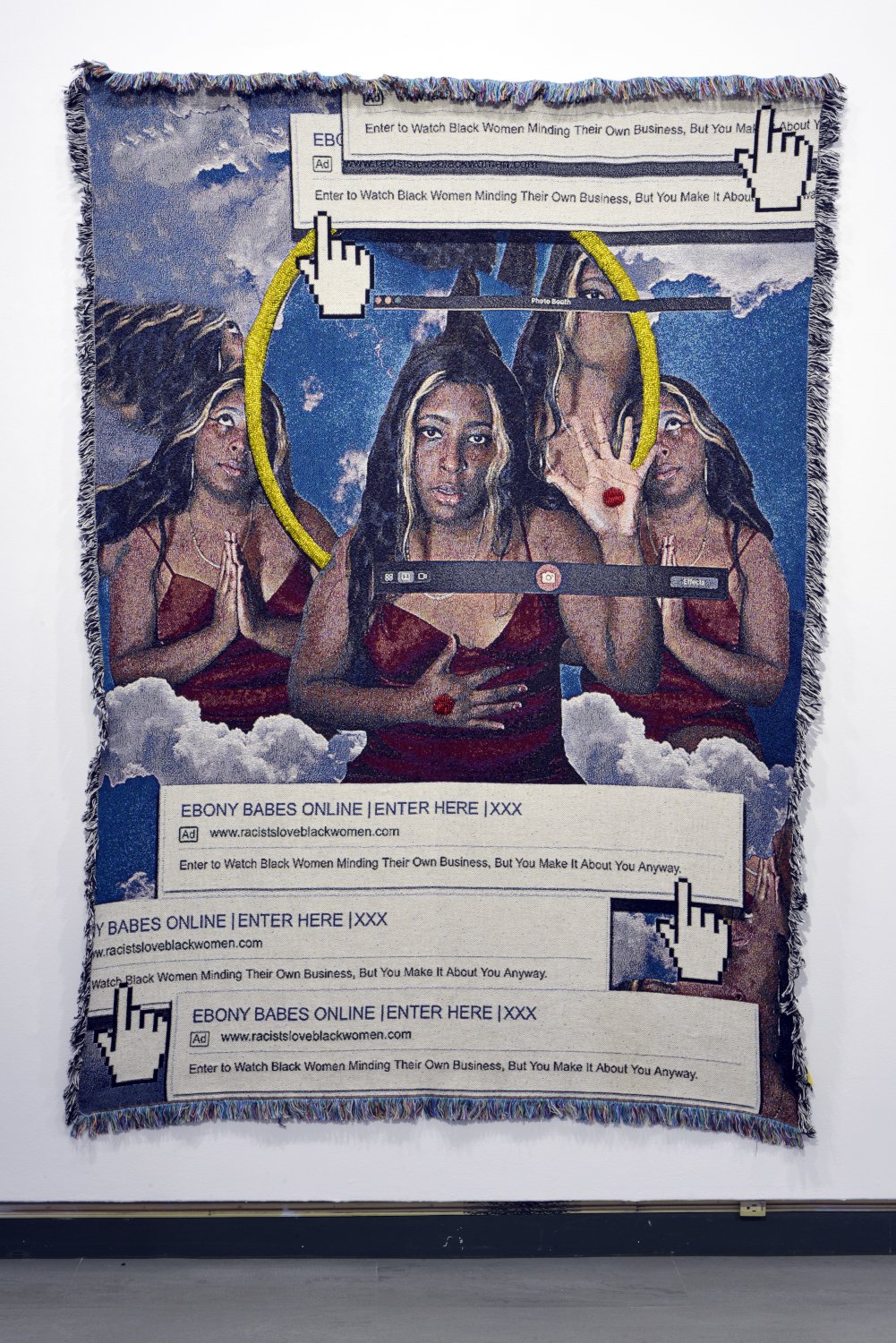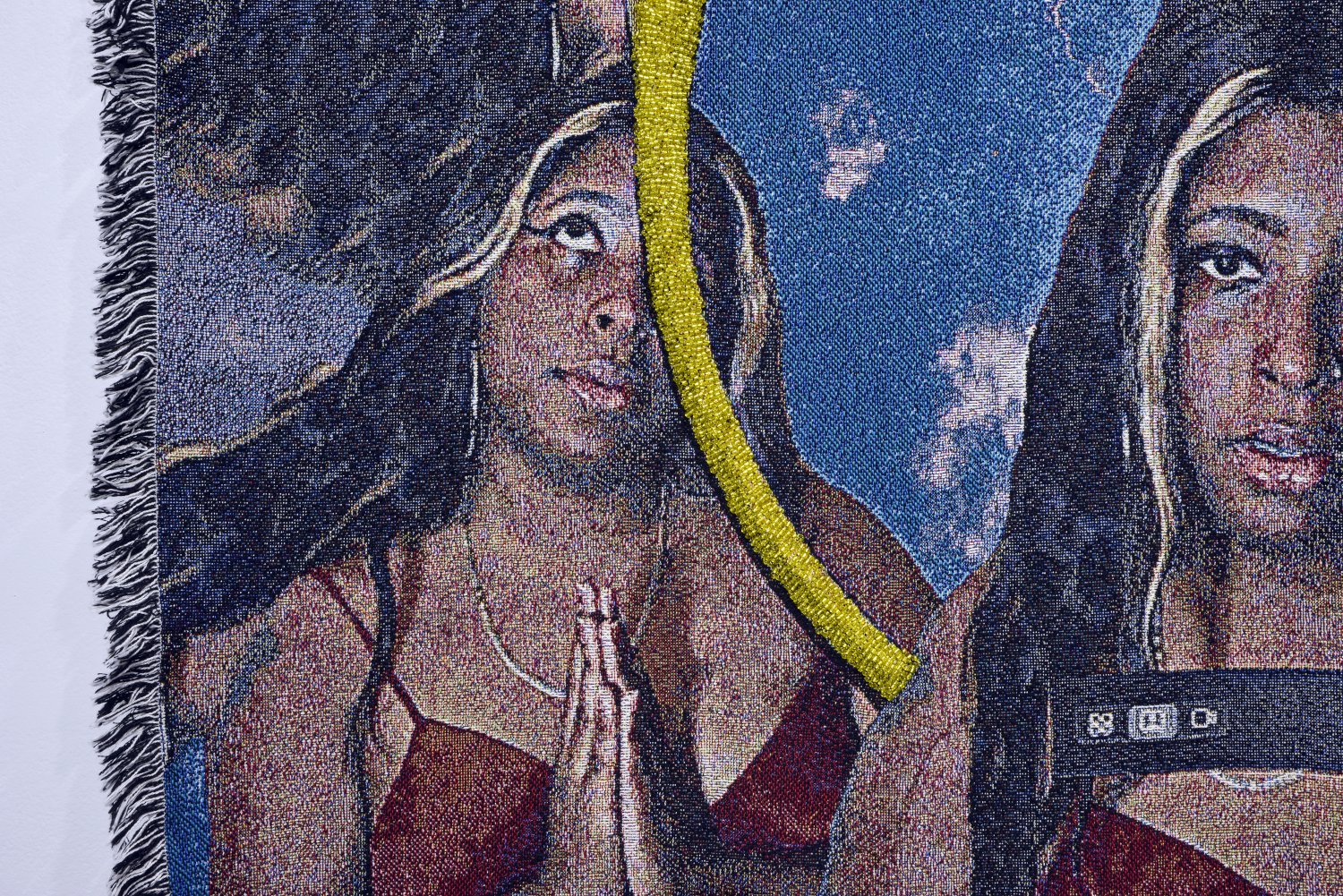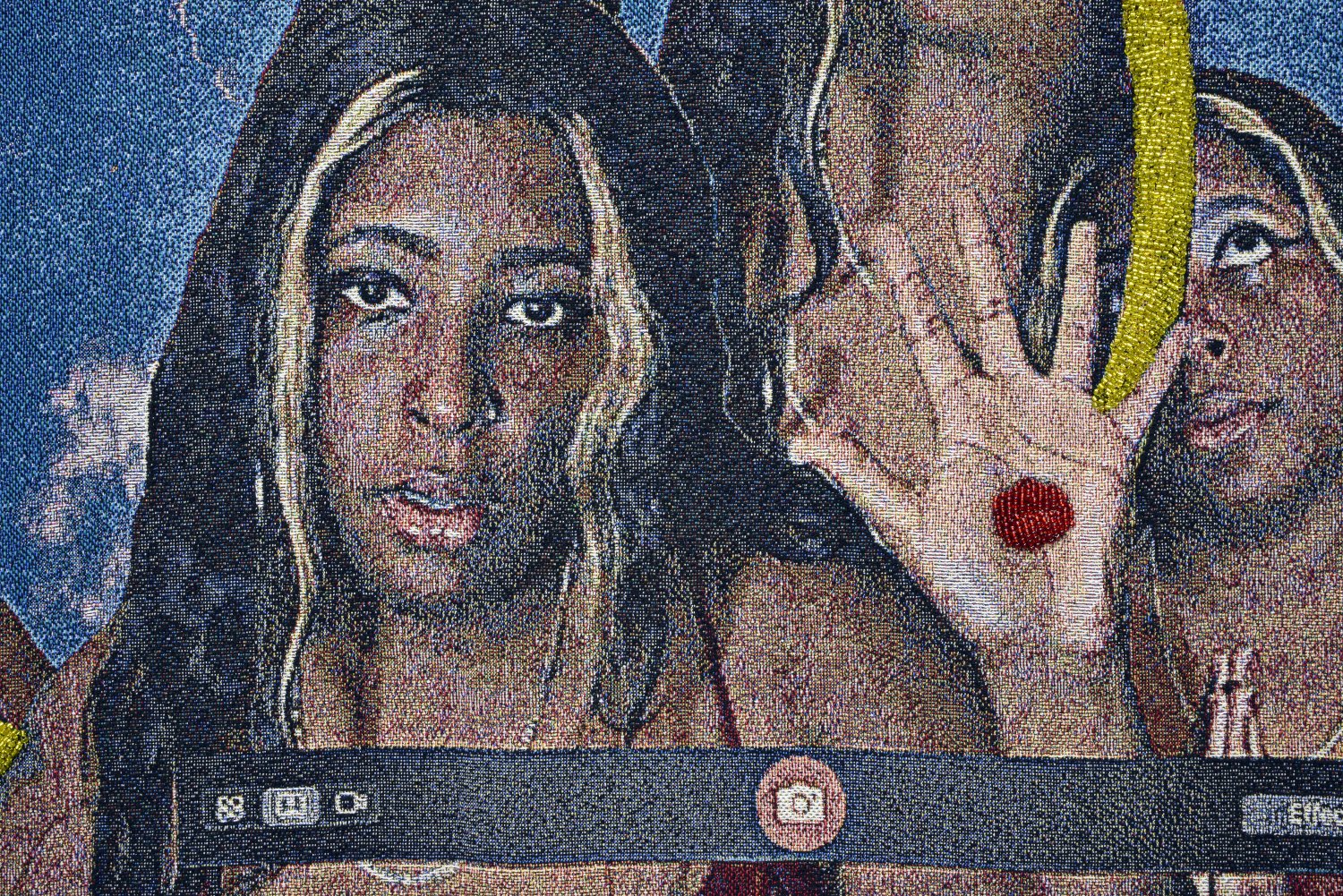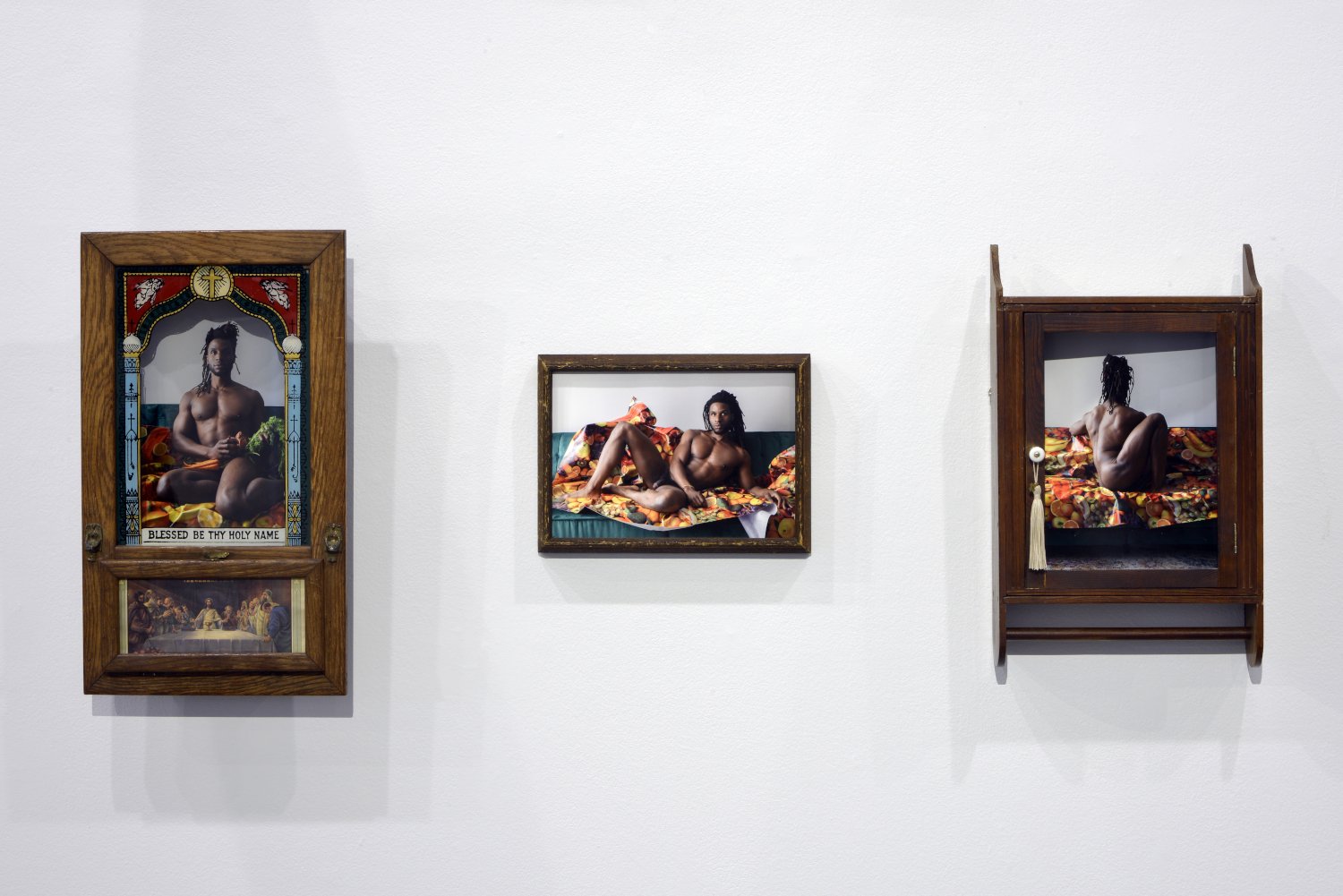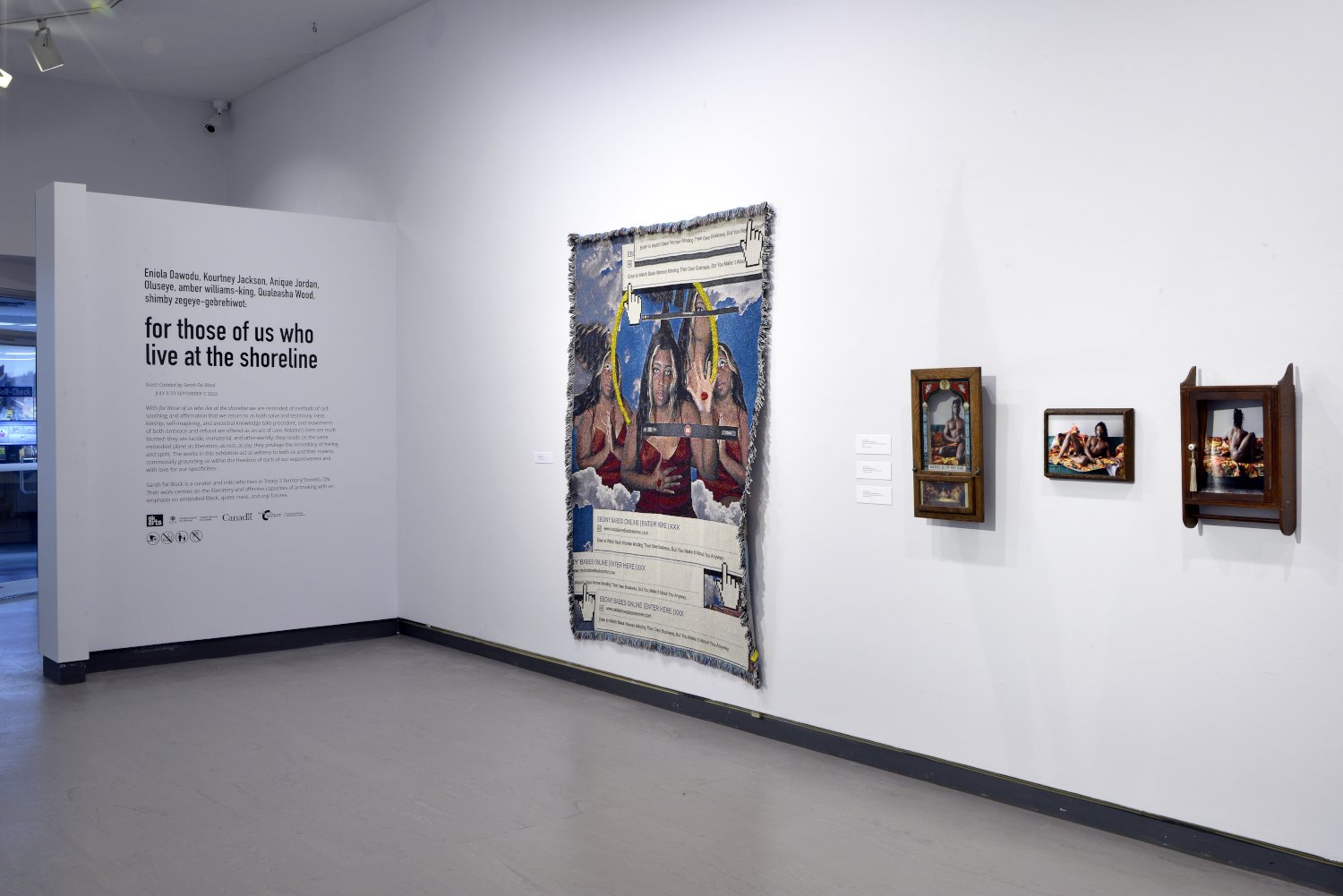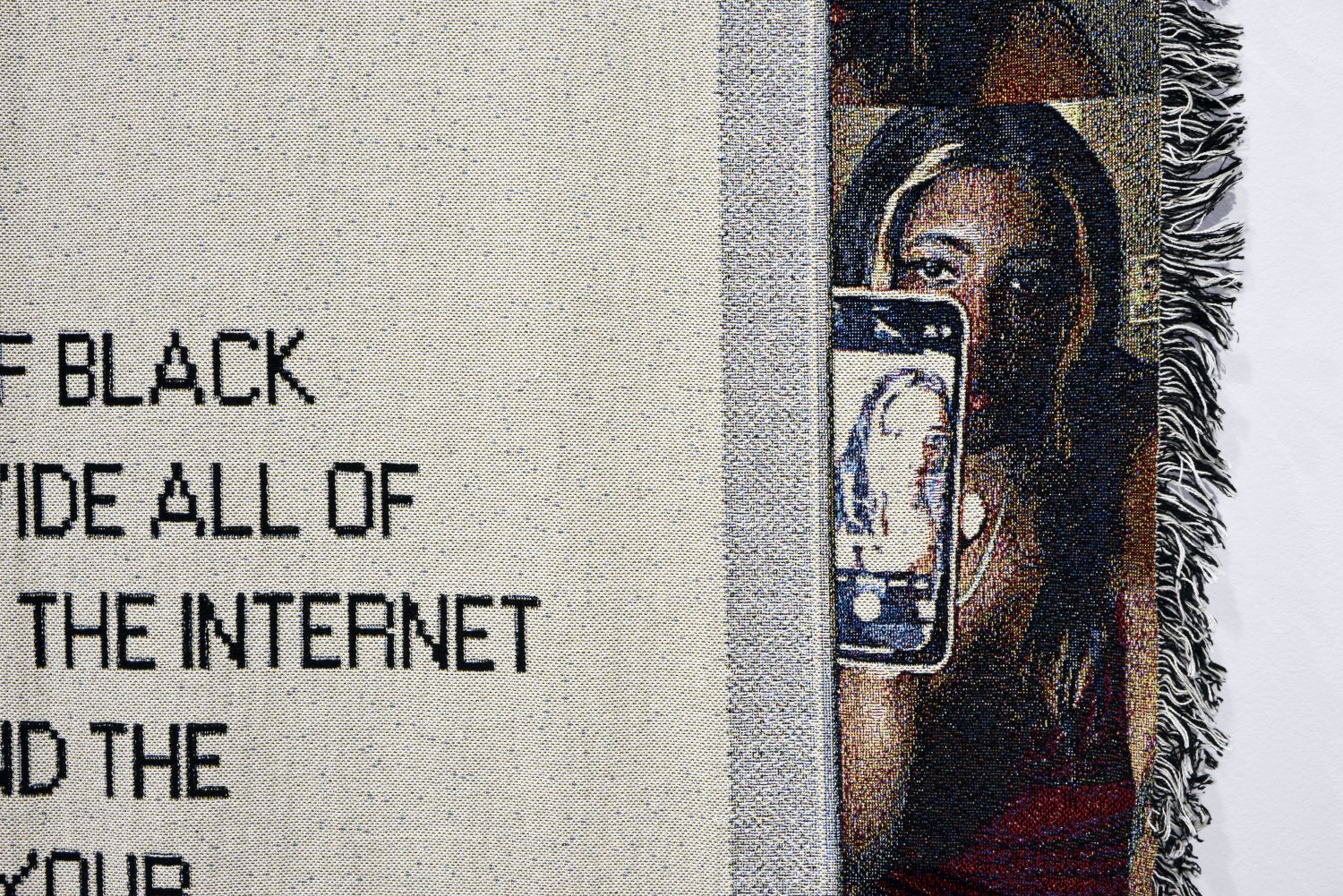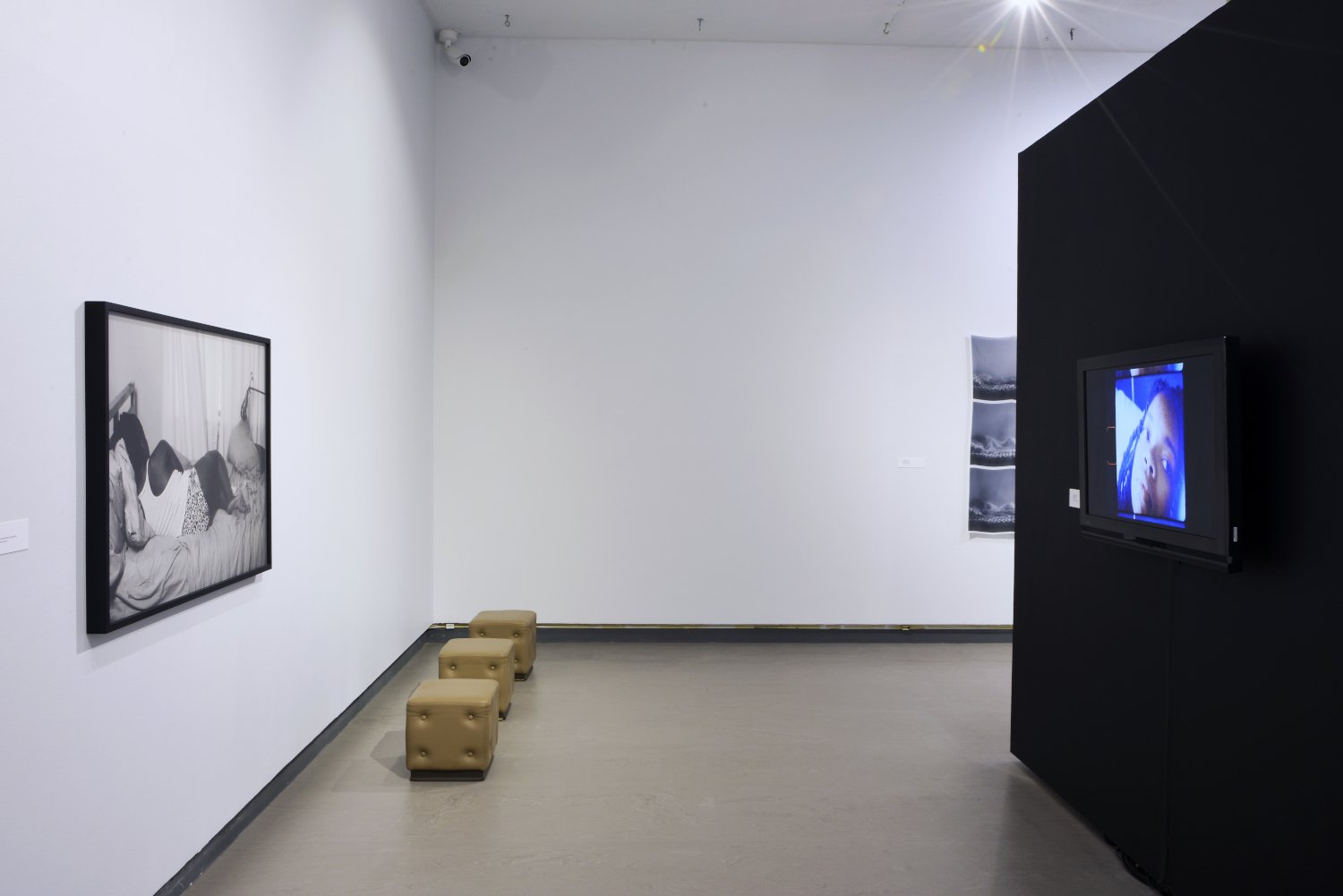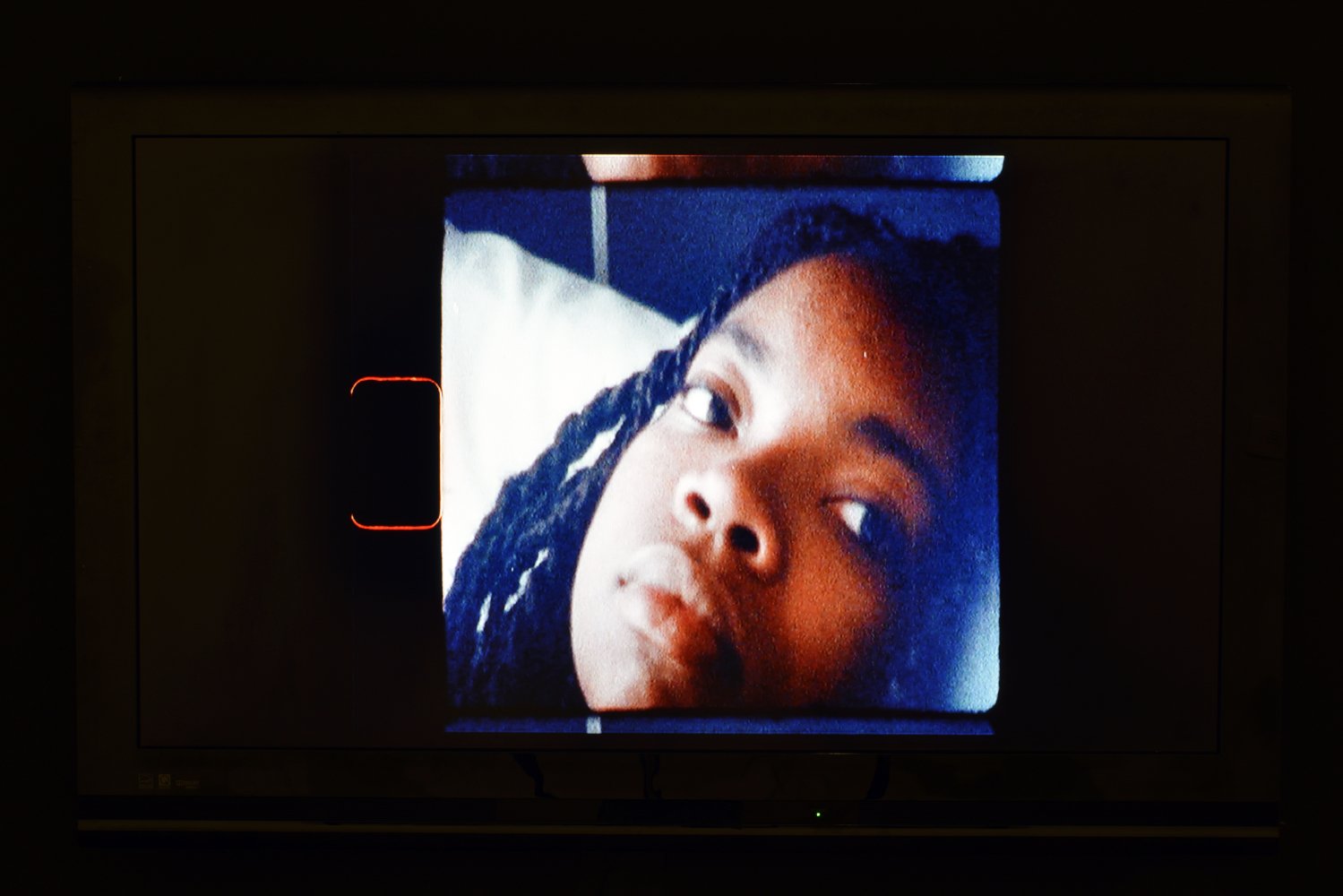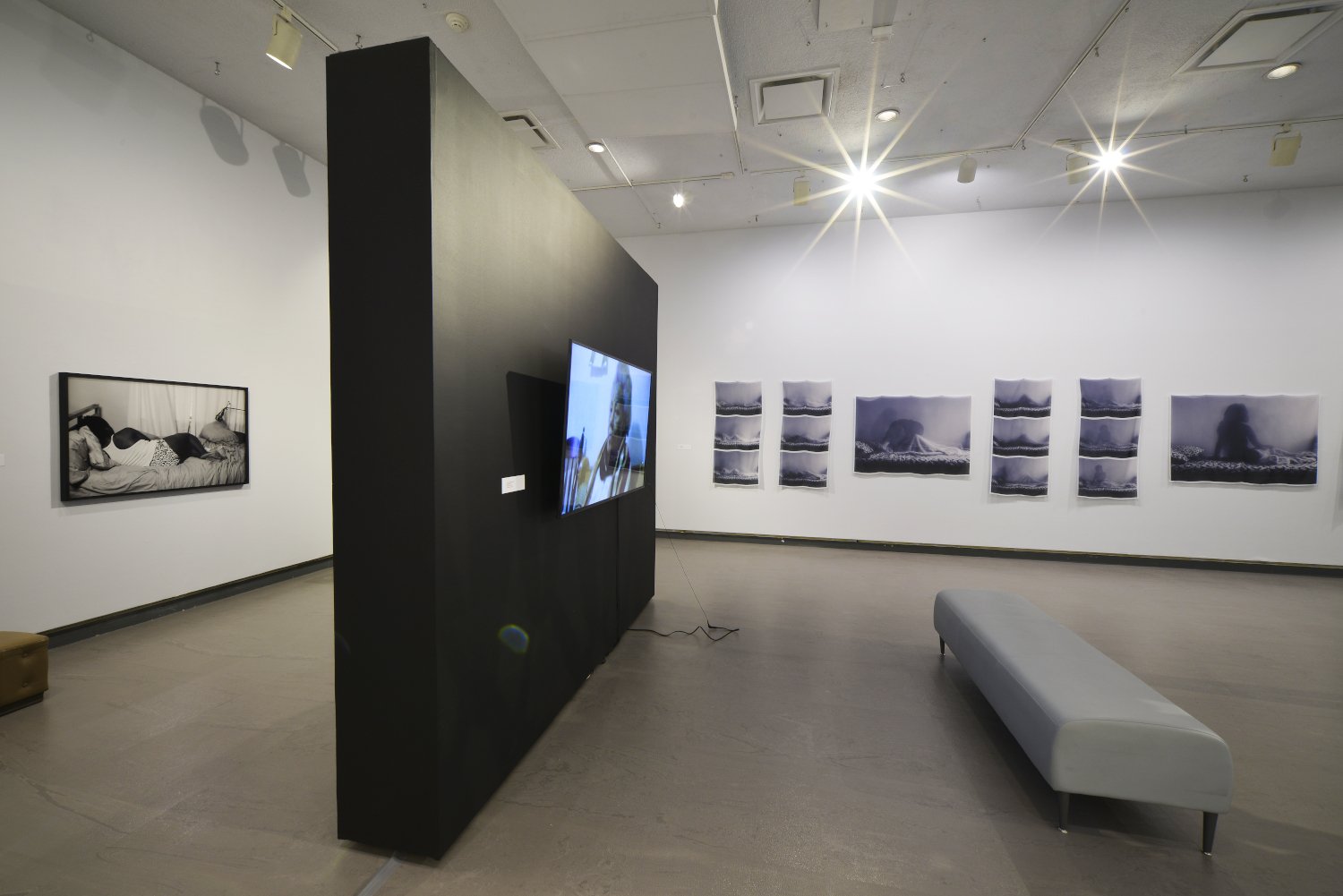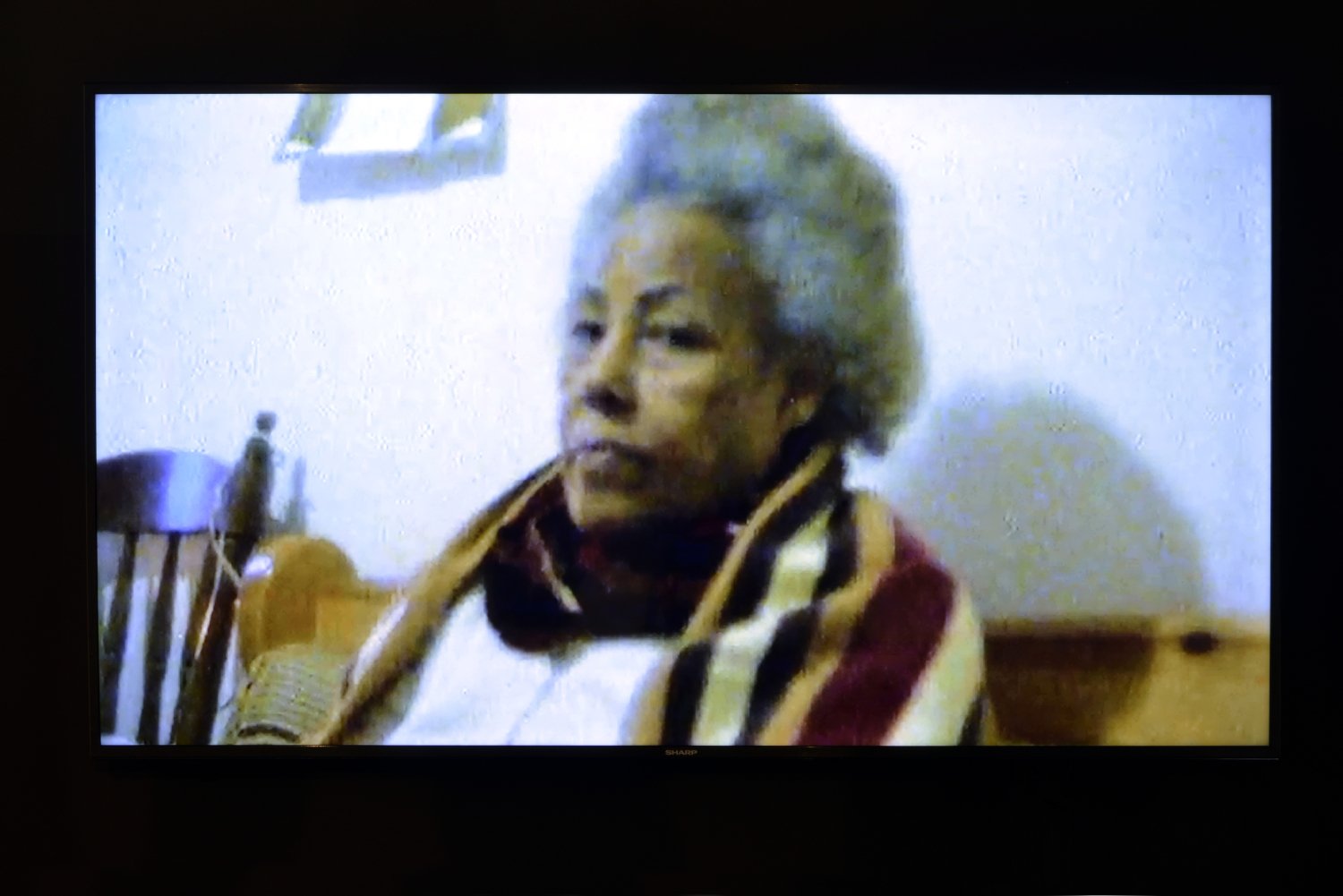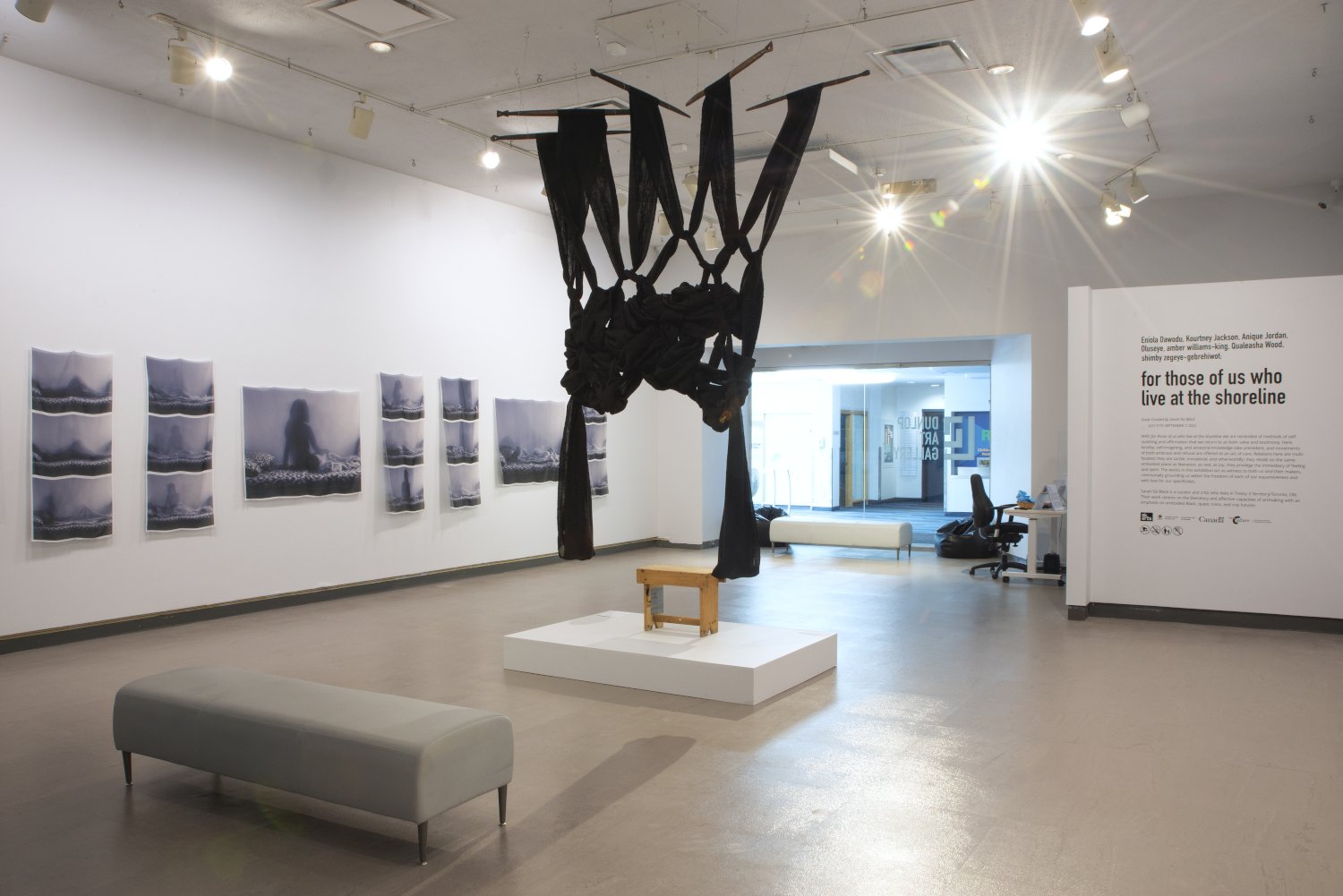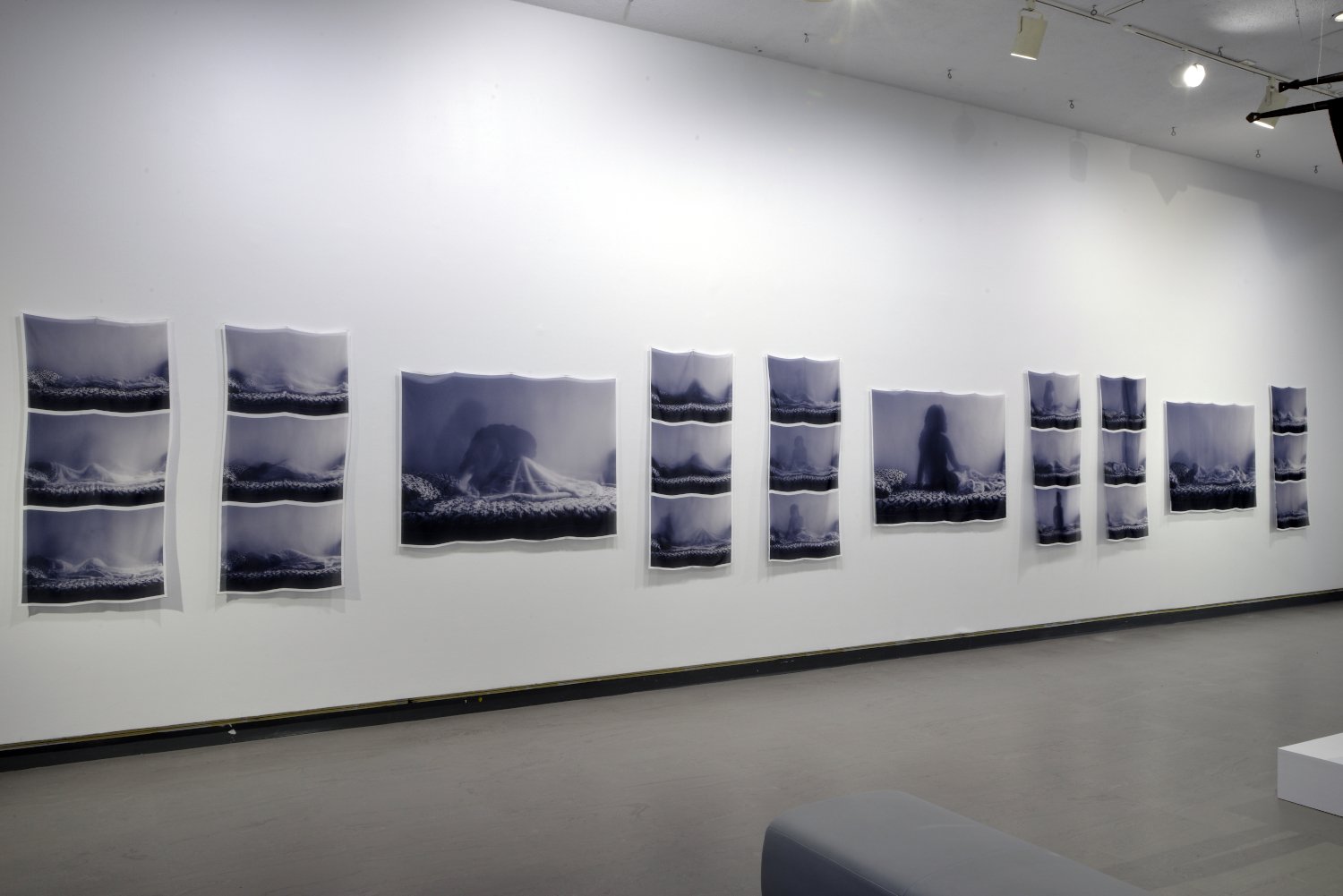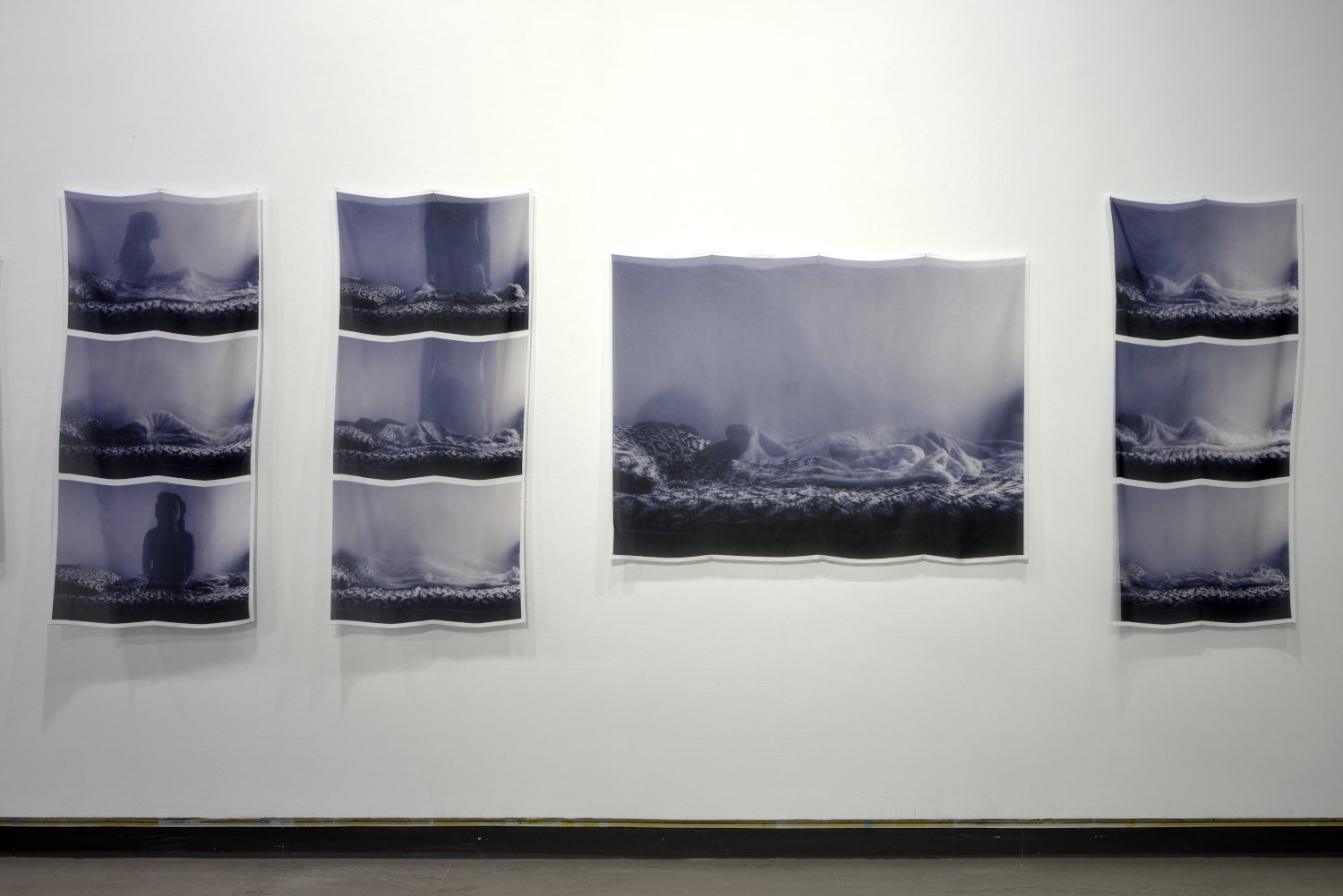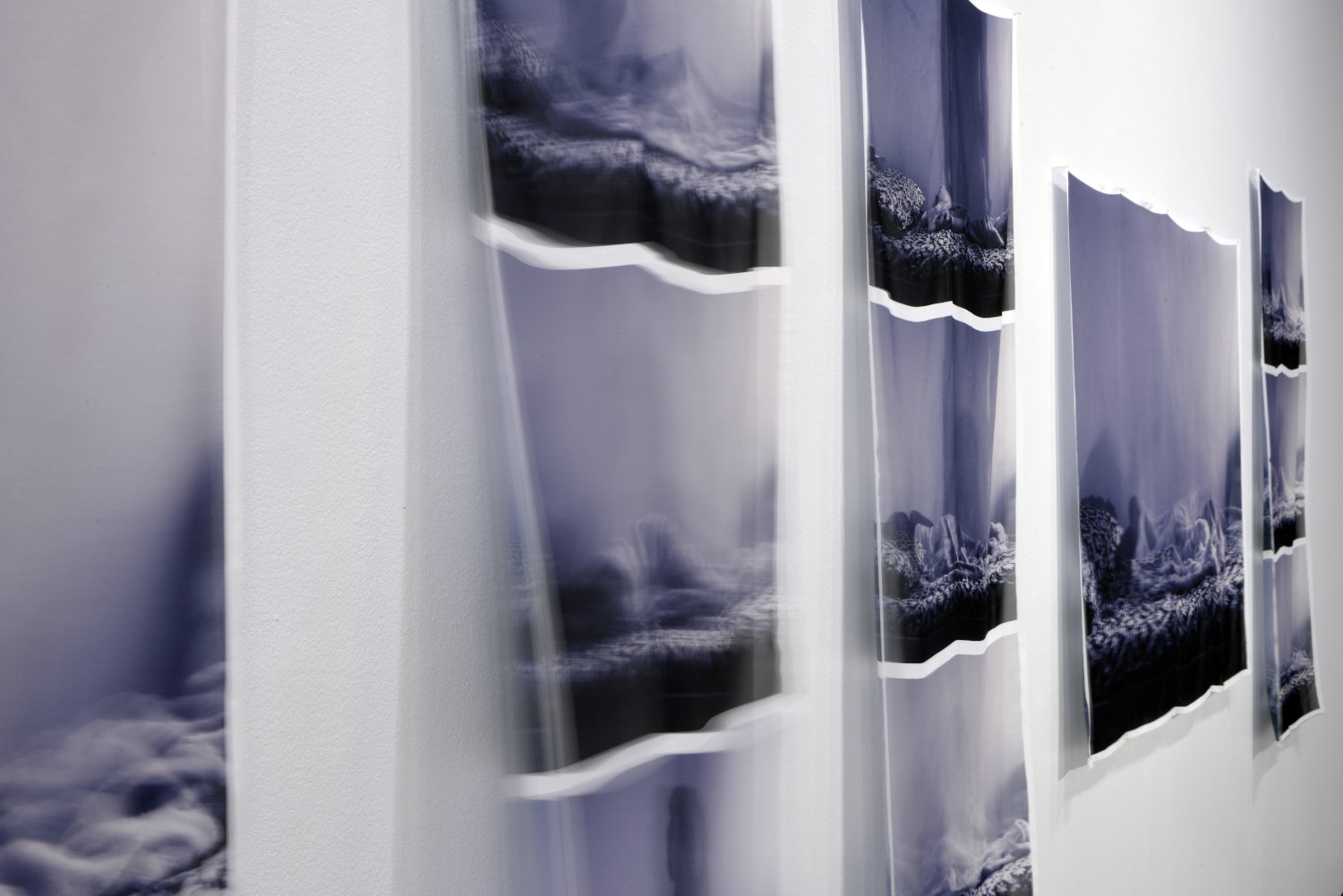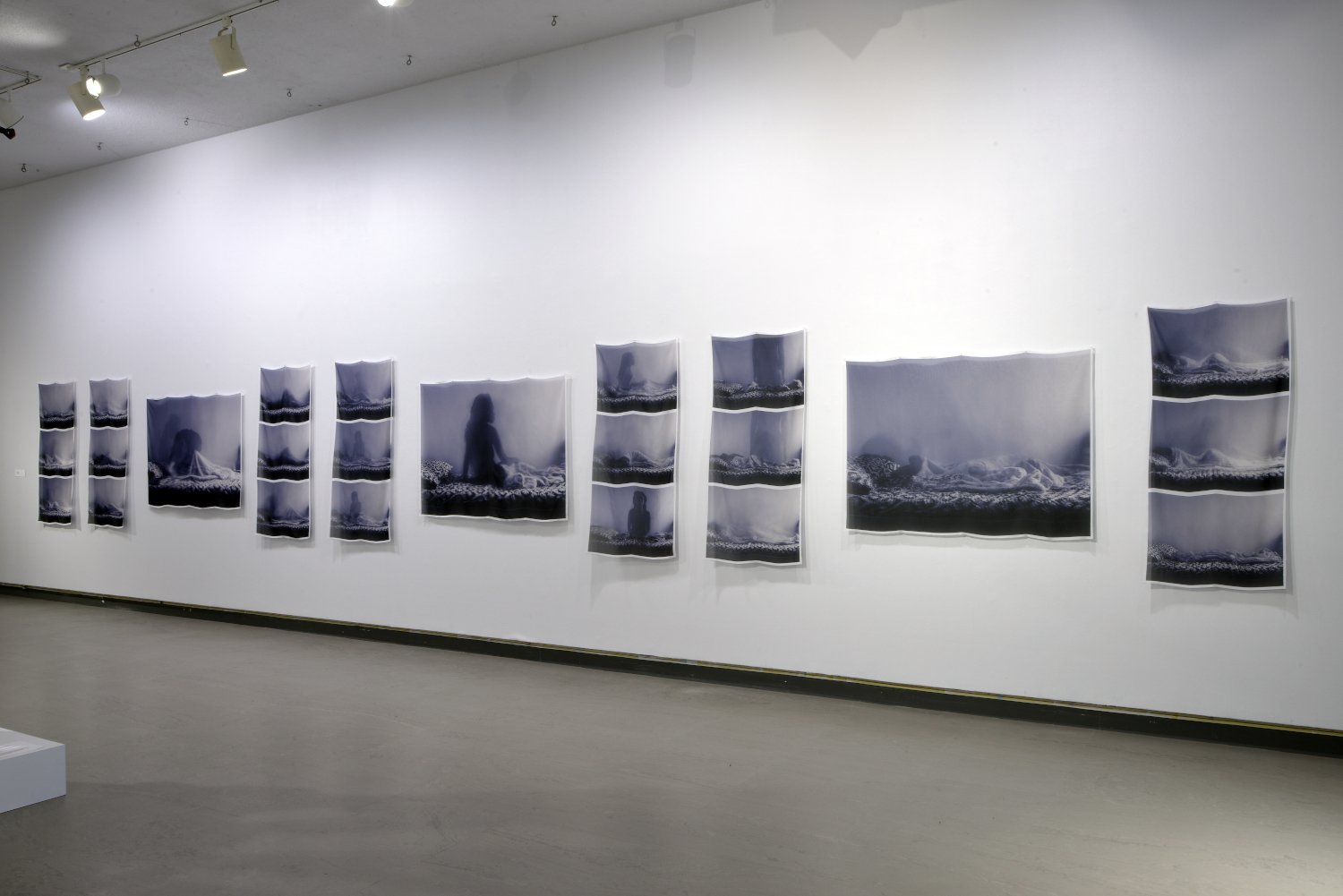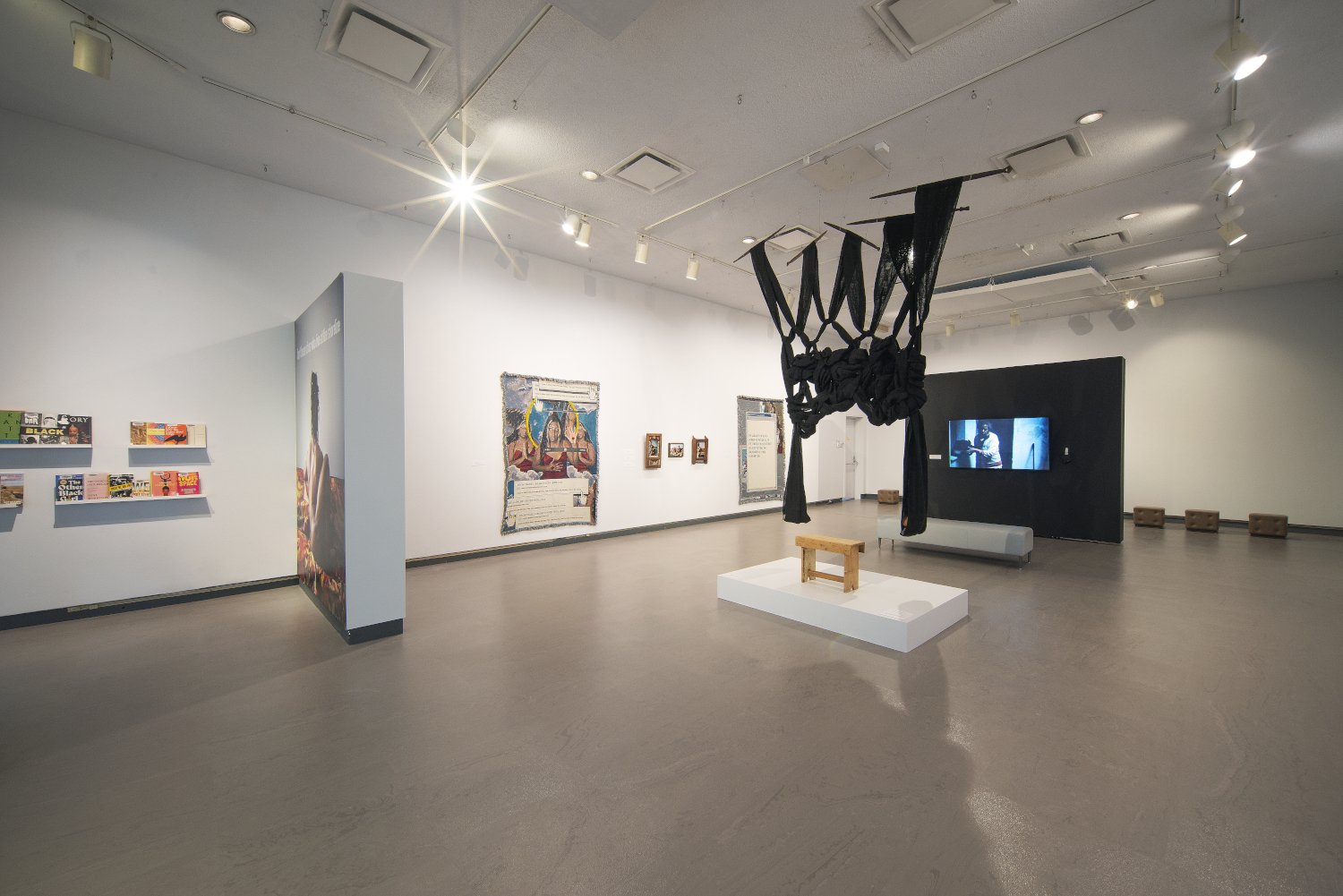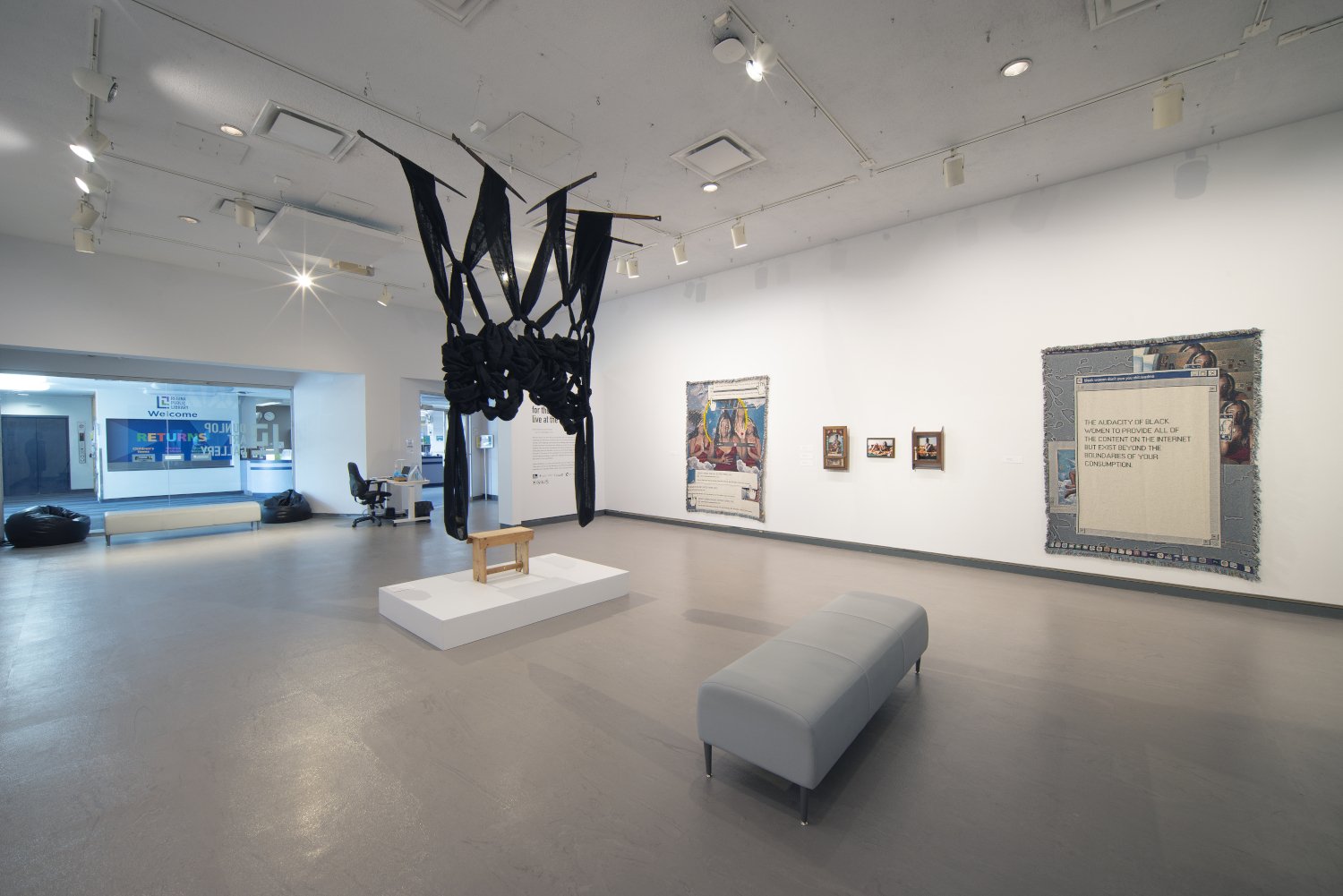Oluseye Ogunlesi, Steve Act II, photograph and mixed media, 209. Photo courtesy of the artist.
With for those of us who live at the shoreline we are reminded of methods of self-soothing and affirmation that we return to as both salve and testimony. Here, kinship, self-imagining, and ancestral knowledge take precedent, and movements of both embrace and refusal are offered as an act of care. Relations here are multi-faceted: they are tactile, immaterial, and otherworldly; they reside on the same embodied plane as liberation, as rest, as joy; they privilege the immediacy of feeling and spirit. The works in this exhibition act as witness to both us and their makers, communally grounding us within the freedom of each of our expansiveness and with love for our specificities.
Sarah-Tai Black is a curator and critic who lives in Treaty 3 Territory/Toronto, ON. Their work centers on the liberatory and affective capacities of art-making with an emphasis on embodied Black, queer, trans, and crip futures.
ESSAY ↑
for those of us who live at the shoreline (Central Library) July 9 – September 7, 2022
each of us, beloved (Sherwood Village Branch) July 9 – September 7, 2022
By Sarah-Tai Black
“Living is the most important thing I do, and poetry comes after that.”
— Gwendolyn Brooks
As we enter into the third year of a global pandemic that has further laid bare the violent machinations of state and racial capitalism, we are urgently reminded of acts and practices that reinscribe much needed care and intimacy for ourselves and our kin. These acts have surely existed beyond this moment and continue to invite the undoing of the world as we know it. They are unencroachable forms of knowledge that privilege subjectivity and embodiment and, following the words of J. Kameron Carter and Sarah Jane Cervenak, offer “a release of self from its entrapment within property into an alternate intimacy.” They are as material as they are ineffable, expansive as they are singular. They are freedom tools.
In centering such practices, I am also wondering how we might also destabilize the intellectual and abstracted view of art and Black life—one that values the productive and economical flow of Black life and cultural product over both rest and individual and collective healing; one that submits Black artists to a regime of legibility and its twin thrust of marketability. I am wondering about the ethics and import of curating such a space for the public eye and contemplating what gets lost in the movement from curatorial intention and artistic practice toward attempts to materialize both in (as well as through) an institutional or otherwise bureaucratically organized space. I am wondering if there is truly room for the kind of community and politics I wish to make space for here or if I am just working in the exact ways I wish to critique.
Both exhibitions each of us, beloved and for those of us living on the shoreline endeavor to ask: what might freedom look like for each of us? What might it feel like? What are its tactile, spiritual, and social elements? The works in both shows act here as radiant guides in visualizing how we might come to our liberatory movements and acts of care for ourselves and our communities. To bring them together collectively is a privilege and—even as these artistic practices are personal in nature and attributed to their respective individual makers—set in relation to one another they stand as a testament to our connectivity. We must not forget the political function of isolation, of nihilism, of feeling future-less, of assumptions that we are only death-bound. When we turn inwards towards our capacities for self-soothing, for self-regulation of our nervous systems; look outwards toward our need for intimacy, for care, for creative expression, for ways through which we may be present with one another and co-regulate each other's bodies and minds; when we refuse attempts to make us feel less than, to erase these methods themselves, what is it that we reach for? See? Feel? Taste? Touch? Hear? I hope that these spaces can act as sites of contemplation for future-making, for present-living, and for so much more than just enduring.
Much of my thinking in this way has been shaped by the work of somatic abolitionists and of thinking through ways in which we may return to ourselves, our bodies, our ancestral or cultural practices. As a writer (ish), it is words I turn to most often. I think of healer, embodiment practitioner, and movement facilitator Prentis Hemphill’s words “In the body and through feeling is a different kind of free.” I think of beloved elder and Black, lesbian, mother, warrior, poet Audre Lorde and her invocation of “that deep and irreplaceable knowledge of my capacity for joy,” of her ever sterling reminder that we contain a kaleidoscopic presentness that exists in delightful excess of the demands and strictures of the settler state. I think of the way that so many of us turn to such words when we feel we can only contain an immediacy of feeling and how so many of us understandably—often acting from a lived space of urgency—forget that this in itself is a kindred relational practice. With our ancestors, with our elders, with ourselves, we have not forgotten how to commune.
These are sacred acts, even as we turn to them in moments of duress, even as we find ourselves physically alone. They open up worlds whose potential exceeds that which threatens our freedom. They are, following Carter and Cervenak, life-giving, offering themselves as “the safe house and harbor at world’s end.” Indeed, the curation of this show is of this same ether; it is a necessary act that materialized from an urgency voiced by my body and mind in both feeling and spirit. Within this, I don’t care—I can’t care—for direct translation, for the glossy patina of unambiguous transparency, to wear my insides on the outside, to translate for those who deem that they “need” or require such efforts. Safety, nevermind comfort, requires that we refuse the regime of the legible, of the Black mythic, of high-functioning neurotypical methods of communication.
What I am interested in privileging instead is embodiment and interiority, in all its forms and variations, as a method of kinship, as a language in and of itself, as a modal of healing; in honouring the practices of those who came before us while also not losing sight of the importance of our own, whatever shape those may take. And while I invoke the names of lauded thinkers in this reflection, I want to remind us also that we do not need to be celebrated to be worthy of care, we do not need to be revered to be worthy of love. We do not need to be an artist, a curator, or anyone else put to so-called good use. In these spaces, I hope that we can re-stabilize our thinking of ourselves within this line of thought and commune together with this work that has been so generously shared.
—
With gratitude to my dear friend and Black qrip kin patch monoceros who inspired my first thoughts and feelings in regards to the shaping of these shows. Love is a warm quilt on a cold Winnipeg night.
Installation Images ↑
Photos by Don Hall
